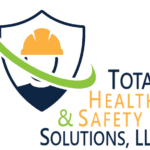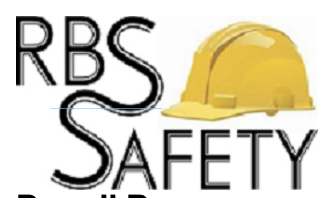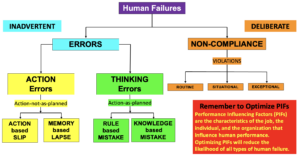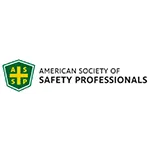CLICK HERE to Renew your Membership
CLICK HERE for a NEW Membership
CLICK HERE to see eligibility requirements for FREE Membership
If you have any questions, please contact me
We offer:
- Over 17,600 categorized unsafe acts/conditions and accident/injury photos
- Over 1,450 ppt's & doc's
- Over 3,975 technical articles on Process Safety & Occupational Safety & Health matters
- Over 450 videos

I am proud to announce that have extended our”Partners in Safety” agreement for another year (2025).
CI Members, send me an e-mail to request your FREE SAFTENG membership.














May 16, 2023
In safety, the greatest possible accident-preventing condition is that which is constituted by the regard of the individual (1) for his own wellbeing, (2) for the dependents who may suffer if he is incapacitated for work, and (3) for the losses suffered by his employer, by industry in general, and by the community and society, if through injury to himself, he becomes incapable of accepting his share...
Read More
May 16, 2023
It is impossible to change the safety culture without modifying the signals that the organization sends through the greater or lesser quality of what it offers in terms of technical design, safety management systems, and integration of human and organizational factors. Source: The ICSI “Safety Culture” working group (2017). Safety Culture: from Understanding to Action. Issue 2018-01 of the Cahiers...
Read More
May 15, 2023
Made you look! Of course, Homer was not a safety professional, but he did have a good grasp on RECOGNIZING HAZARDS and REALIZING CONSEQUENCES.
Once harm has been done, even a fool understands it.
Homer (800 BC)
…
HomeRead More »
Read More
May 12, 2023
OSHA clarifies the term “chemicals associated with formaldehyde gas” under OSHA’s Formaldehyde standard, 29 CFR § 1910.1048. The questions answered are: Question 1: Is the term “chemicals associated with formaldehyde gas” in paragraph 29 CFR § 1910.1048(m)(1)(iv) correct? Question 2: What does OSHA mean by “chemicals associated with formaldehyde gas?” Question 3: How does the category of “chemicals...
Read More
May 12, 2023
The registration process for RMP*eSubmit Certifying Officials recently changed to use additional CDX registration features. The below changes went into effect on Friday, February 24, 2023. Please note that no immediate action is necessary unless one of your facilities has an upcoming anniversary date or need for a resubmission, correction or a first time submission. Identity Proofing and...
Read More
May 11, 2023
The latest NTSB Safety Alert can be applied to Process Safety! It speaks to the critical nature of “joinment” using a B-nut on fuel, oil, and air lines on aircraft. And it speaks to over-torquing or under-torquing as a failure mode for this joinment. A B-nut is a common term for a nut that provides the clamping force to create a reliable seal in lines (such as fuel, oil, or...
Read More
May 11, 2023
Dr. Todd Conklin’s view on the popular “STOP WORK” Authority approach is one that I can support 100% and have lived my entire career, so yes, my bias for a Safe-Work Permitting Process (SWPP) will shine brightly in this post. And I am surprised at how controversial Dr. Conklin’s approach has become because what he is promoting is exactly what the Safe-Work Permitting...
Read More
May 11, 2023
How many C-suite executives can actually discuss the safety controls/barriers/activities they invest in every year? We can NOT control the injury rates, but we CAN CONTROL those safety controls/barriers/activities that have been put into place to impact those injury rates. FOCUS on what we CAN CONTROL, and if our safety controls/barriers/activities follow the Hierarchy of Controls, that will FUNDAMENTALLY...
Read More
May 11, 2023
We often hear the terms “employee participation” and “employee engagement” used as if they are identical in their approach; nothing could be further from the truth. In safety, we need “employee participation,” not “employee engagement”. How different are these phrases? Oxford Dictionary defines them as: Participation – the action of...
Read More
May 11, 2023
When a situation exists that creates a loss of life, injury, and suffering; when it costs a king’s ransom annually; when its cure has been demonstrated to be practical; and when all are agreed that something can and should be done about it, it is time to stop talking, roll up the sleeves, and go to work. Industrial Accident Prevention – A Scientific Approach, H. W. Heinrich, Assistant...
Read More
May 10, 2023
Scenario: As part of their normal workday, an employee commutes in his personally-owned vehicle from home to the workplace. At the end of his 8-hour work shift, the employee commutes from the workplace to his home. Later that same day, there is an emergency at the workplace, and the employee’s supervisor calls him to return to work to assist with resolving the emergency. The employee starts driving...
Read More
May 10, 2023
It is a standard error made in Behavior Based Safety Processes (BBSP)… we celebrate the % Safe while the real value lies in the % Unsafe. I am all for celebrating the successes once they have been validated as real; however, to get the potential value from our BBSP, we need to utilize the unsafe behaviors to create a LEARNING CULTURE within our organizations. Even when the unsafe...
Read More






















